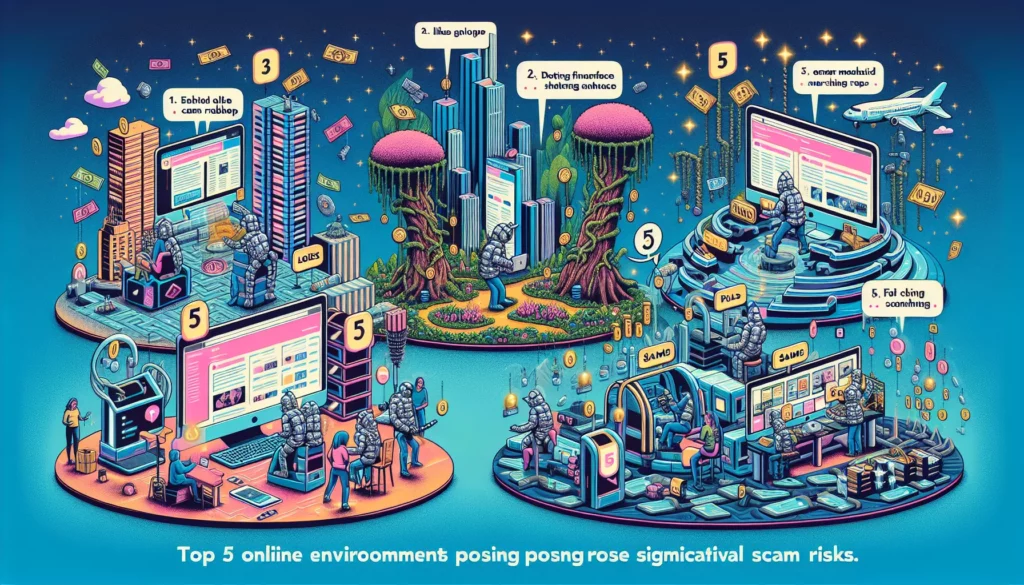Top 5 Online Environments Posing Significant Scam Risks
Scammers are increasingly leveraging smartphones as a primary means of reaching potential victims. They deploy various deceptive tactics, including sending fraudulent tracking links for nonexistent packages, expressing insincere love via social media, inundating users with phishing emails, impersonating family members through phone calls, and directing individuals to malicious websites.
Research indicates that scammers predominantly use five channels to identify and target new victims: email, phone calls and voicemails, malicious websites, social media platforms, and text messages. These mediums are where individuals are most susceptible to phishing attempts, romance scams, sextortion threats, and various other fraudulent schemes. It is crucial for users to exercise caution when receiving messages from unfamiliar sources or when responding to urgent requests for payment or personal information.
In a comprehensive survey conducted by a leading cybersecurity research firm with 1,300 participants aged 18 and older across the US, UK, Austria, Germany, and Switzerland, findings revealed that 78% of respondents experience scam attempts on their smartphones at least once per week, highlighting the pervasive nature of these threats in everyday digital interactions.
The primary channels through which individuals encountered weekly scams are as follows:
– 65% of participants reported encountering scams through email.
– 53% experienced scams via phone calls and voicemails.
– 50% received scams through text messages (SMS).
– 49% encountered scams on malicious websites.
– 47% faced scams through social media platforms.
The dynamic nature of scams necessitates vigilance beyond these primary channels, as scammers continually adapt their approaches. For example, while only 36% reported encountering scams through buying or selling platforms such as Facebook Marketplace or Craigslist, these environments often lead to significant financial loss for unsuspecting users when scammers impersonate legitimate businesses.
The overwhelming prevalence of scams has left individuals feeling confused, with only 15% of participants expressing strong confidence in their ability to identify a scam on their device.
A more alarming statistic reveals that 44% encounter scams on a daily basis. The frequency of daily scam encounters is broken down as follows:
– 34% of individuals encountered scams at least once a day through email.
– 25% experienced scams daily via malicious websites.
– 24% faced scams through phone calls and voicemails.
– 24% reported daily scam encounters on social media platforms.
– 22% encountered scams through text messages (SMS).
This data underscores the integration of mobile devices into daily routines, affirming that individuals utilize smartphones for various tasks—checking emails, browsing the internet, communicating via calls and text, and engaging on social media—while simultaneously exposing them to these alarming threats.
Scammers employ diverse methods, making analysis complex. For instance, social engineering tactics that prompt users to click on package tracking links exploit false urgency or impersonation. Such messages can originate from multiple sources and direct victims to malicious websites. Likewise, romance scams may initiate on social media platforms but transition into messaging services like WhatsApp. Extortion threats, which can manifest via phone calls or texts, add another layer to this evolving challenge.
To effectively comprehend the impact of scams, participants were queried about approximately 20 distinct types of cybercrime. It was revealed that 74% had encountered social engineering scams, with 36% falling victim to them. The most prevalent social engineering scams reported by participants included:
– Phishing, smishing, and vishing: 53% encountered and 19% were affected.
– USPS/FedEx/postal scams: 42% encountered and 12% were victimized.
– Impersonation scams: 35% encountered and 10% were harmed.
– Marketplace or business scams: 33% encountered and 10% affected.
– Romance scams: 33% encountered and 10% victimized.
For those who experienced these scams, it was revealed that the initial points of contact often illustrated where individuals were most vulnerable. Notably, 26% of victims of charity scams were targeted on social media, while 37% of postal notification scam victims were approached via SMS. Additionally, despite the popularity of social media in spreading cryptocurrency scams, 30% of victims reported being contacted through email.
Moreover, significant findings indicated that 17% of individuals have fallen prey to extortion scams, which may involve ransomware threats, virtual kidnapping schemes, or threats of releasing explicit content. The channels where these scams were most frequently delivered included emails and social media, reinforcing the importance of scrutinizing any unsolicited communications.
While these statistics paint a concerning picture, they also serve as vital educational tools. There is no universally secure communication method available today, but individuals can take proactive measures to enhance their protection against scams.
To assist users in evaluating the authenticity of communications, a digital safety solution enables individuals to analyze any concerning text, email, phone number, link, or online message. By sharing screenshots of suspicious content—such as unexpected password requests or alarming notifications—users receive guidance to navigate potential threats and report scams effectively.








